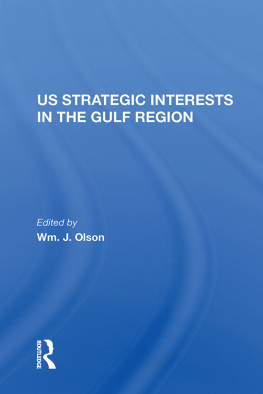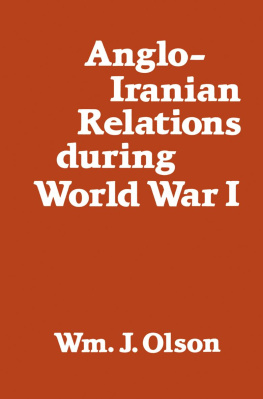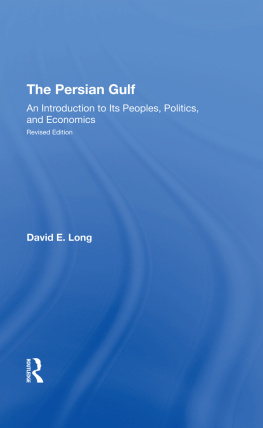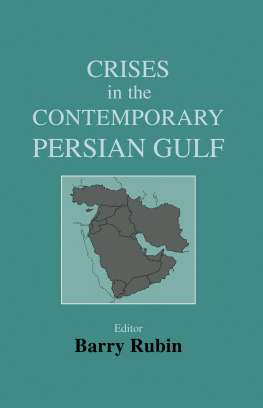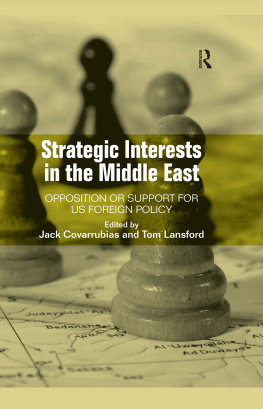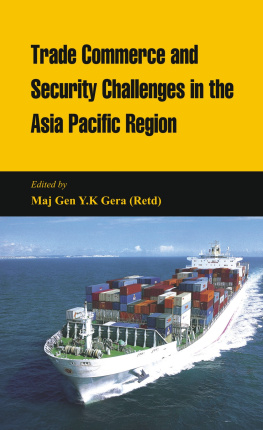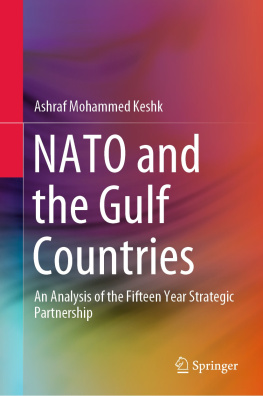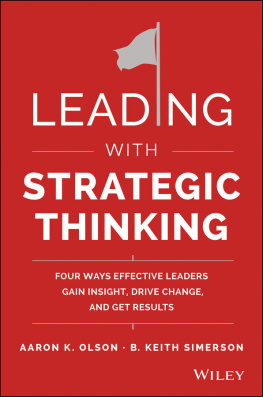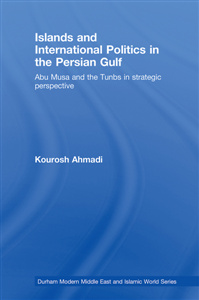William J. Olson - U.s. Strategic Interests in the Gulf Region
Here you can read online William J. Olson - U.s. Strategic Interests in the Gulf Region full text of the book (entire story) in english for free. Download pdf and epub, get meaning, cover and reviews about this ebook. year: 1986, publisher: Westview Press, genre: Politics. Description of the work, (preface) as well as reviews are available. Best literature library LitArk.com created for fans of good reading and offers a wide selection of genres:
Romance novel
Science fiction
Adventure
Detective
Science
History
Home and family
Prose
Art
Politics
Computer
Non-fiction
Religion
Business
Children
Humor
Choose a favorite category and find really read worthwhile books. Enjoy immersion in the world of imagination, feel the emotions of the characters or learn something new for yourself, make an fascinating discovery.
- Book:U.s. Strategic Interests in the Gulf Region
- Author:
- Publisher:Westview Press
- Genre:
- Year:1986
- Rating:5 / 5
- Favourites:Add to favourites
- Your mark:
- 100
- 1
- 2
- 3
- 4
- 5
U.s. Strategic Interests in the Gulf Region: summary, description and annotation
We offer to read an annotation, description, summary or preface (depends on what the author of the book "U.s. Strategic Interests in the Gulf Region" wrote himself). If you haven't found the necessary information about the book — write in the comments, we will try to find it.
U.s. Strategic Interests in the Gulf Region — read online for free the complete book (whole text) full work
Below is the text of the book, divided by pages. System saving the place of the last page read, allows you to conveniently read the book "U.s. Strategic Interests in the Gulf Region" online for free, without having to search again every time where you left off. Put a bookmark, and you can go to the page where you finished reading at any time.
Font size:
Interval:
Bookmark:

605 Third Avenue, New York, NY 10017
2 Park Square, Milton Park, Abingdon, Oxon OX14 4RN
Product or corporate names may be trademarks or registered trademarks, and are used only for identification and explanation without intent to infringe.
US strategic interests in the Gulf region.
Westview Studies in Regional Security
Includes index.
1. Persian Gulf RegionStrategic aspectsAddresses,
essays, lectures. 2. United StatesMilitary relations
Persian Gulf RegionAddresses, essays, lectures.
3. Persian Gulf RegionMilitary relationsUnited
StatesAddresses, essays, lctures. I. Olson,
William J., 1947 . II. Title: US strategic interests in the
gulf region. III. Series: Westview Studies in Regional Security.
UA830.U23 1987 355'.0330536 85-26983
ISBN 13: 978-0-3672-1535-4 (pbk)
- PART I SOURCES OF INSTABILITY
- 1. PATTERNS OF REGIONAL CONFLICT AND US GULF POLICY
- 2. THE ARAB-ISRAELI CONFLICT: AN ENDURING DANGER TO REGIONAL SECURITY
- 3. SOVIET POLICY TOWARD THE PERSIAN GULF FROM THE OUTBREAK OF THE IRAN-IRAQ WAR TO THE DEATH OF KONSTANTIN CHERNENKO
- PART II TYPES OF INSTABILITY
- 4. THE SOVIET NAVAL PRESENCE IN THE INDIAN OCEAN AND WESTERN SECURITY
- 5. IDEOLOGICAL CHALLENGES TO AMERICAN INVOLVEMENT IN THE PERSIAN GULF
- 6. THE SAUDI ECONOMY IN TRANSITION: PROSPECTS AND BOTTLENECKS
- PART III US POLITICAL-MILITARY RESPONSE
- 7. RAPID DEPLOYMENT AND THE REGIONAL MILITARY CHALLENGE: THE PERSIAN GULF EQUATION
- 8. ASSISTANCE TO THE PERSIAN GULF REGION
- 9. THE LIMITS OF ACCESS: PROJECTING US FORCES TO THE PERSIAN GULF
- 10. FORCE FROM THE SEA: A MODEST PROPOSAL
- 11. AN ALTERNATIVE STRATEGY FOR SOUTHWEST ASIA
- CHAPTER 6
- Table A Saudi Oil Revenues
- Table B Saudi Arabia: Actual Public Spending and Income 1982-85
- CHAPTER 7
- Figure 1 Area of Concern for US Rapid Deployment Forces in Southwest Asia
- Figure 2 Combat Forces Available to USCENTCOM
- CHAPTER 8
- Figure 1 FMS Agreements FY 1975 - FY 1985 Constant FY 1975 Dollars
- Figure 2 Worldwide FMS Agreements FY 1982-1986 (EST)
- Figure 3 Arms Sales to Middle East
Font size:
Interval:
Bookmark:
Similar books «U.s. Strategic Interests in the Gulf Region»
Look at similar books to U.s. Strategic Interests in the Gulf Region. We have selected literature similar in name and meaning in the hope of providing readers with more options to find new, interesting, not yet read works.
Discussion, reviews of the book U.s. Strategic Interests in the Gulf Region and just readers' own opinions. Leave your comments, write what you think about the work, its meaning or the main characters. Specify what exactly you liked and what you didn't like, and why you think so.

